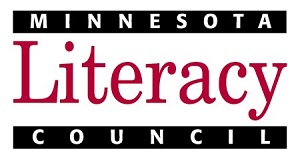- MN ABE Connect
- Archive
- Read My Lips! Pronunciation Videos
 October 8, 2018
October 8, 2018
Read My Lips! Pronunciation Videos
Andrea Echelberger, ESL Training Coordinator“All right everyone, it’s time to speak English. Show me your American mouths!” Immediately, I was faced with a class full of beginning level English learners opening their mouths as far as they could, and laughing as they caught sight of each other. The laughter continued as we pulled out small mirrors and learners watched my mouth form English words, then practiced forming the same movements with their mouths in the mirrors.
 When I said, “Now it’s time to read lips,” learners paired up smiled at and encouraged each other as they took turns mouthing the vocabulary words to one another. My class full of Karen, Hmong, Nepalese, and Burmese speakers were learning how to apply English voice quality settings when they were speaking English, and we were having a wonderful time doing it.
When I said, “Now it’s time to read lips,” learners paired up smiled at and encouraged each other as they took turns mouthing the vocabulary words to one another. My class full of Karen, Hmong, Nepalese, and Burmese speakers were learning how to apply English voice quality settings when they were speaking English, and we were having a wonderful time doing it.
Voice quality settings are defined as the movements of the throat, vocal cords, mouth, jaw, lips, and tongue that occur when a language is spoken by native speakers. Important areas of voice quality settings include muscle tension, rounded or spread lips, the position of the tongue, open or closed jaw, etc.
Voice quality settings affect how a language sounds since different settings produce different audible characteristics. When someone begins to speak a new language, it is natural to apply voice quality settings from his/her first language. When the voice quality settings between the two languages are different, it can affect pronunciation in the new language.
Awareness of and control of voice quality settings in the new language can impact pronunciation. When using word and sentence stress, the stressed syllable generally incorporates larger mouth movements than the unstressed syllables. Additionally, asking learners to focus on and imitate the lip, tongue, and jaw movements of English speakers can be a valuable tool when teaching them how to form specific sounds in English, such as /r/, /l/, /v/, and the voiced and voiceless “th” sounds.
Want to see a lesson on voice quality settings in action, including the activities below? Watch the video Voice Quality Settings: Adult ESL Pronunciation Activities for Improving Mouth Movement on the MN ABE Professional Development Youtube channel, and find other videos on pronunciation instruction in the adult ESL classroom at the Minnesota Literacy Council website at mnliteracy.org/classroomvideos
Imitating Mouth Movements for Voice Quality Settings
Materials needed: a set of small mirrors
- Pass out a mirror to each learner in the group. Instruct the learners to watch your mouth.
- Say a vocabulary word from the weekly unit, exaggerating your mouth movements. Repeat the word several times while the learners watch your mouth.
- Ask the learners to repeat the word while looking at their own mouths in the mirrors.
- Repeat steps 2 and 3 until the learners are able to approximate your mouth movements.
- Repeat steps 2-4 with the vocabulary words from the unit, then review all of the words while the learners watch their mouths in the mirrors.
- Have the learners practice saying some sentences that include the vocabulary words. Give them feedback on their mouth movements when they say the vocabulary words.
Lip Reading for Voice Quality Settings
Materials needed: copies of the list of weekly vocabulary words
- Give the learners a copy of the list of weekly vocabulary words.
- Direct the learners to watch your mouth. Mouth a word from the list, and have the learners tell you what word they saw.
- Go through all of the words on the list, mouthing the words and having the learners read your lips. This works best if you go through the words in random order.
- Give the learners a few minutes to practice mouthing the words to themselves (if they have mirrors, they can watch themselves in the mirrors).
- Put the learners in to partners. Explain that one partner will mouth the words from the list, and the other partner will “read their lips” and tell them what word they see. Remind the learners mouthing the words to choose words randomly.
- Have the learners go through the list of words. When they are finished, they will switch roles and repeat the activity.
Expansion: Follow the steps for the activity, but have the learners use the vocabulary words in a simple, repetitive sentence. For example, if the learners are practicing food vocabulary, they could mouth the sentence “I like to eat _____.” If the learners are practicing places in the community, they could mouth the sentence “I went to the ______ yesterday.”

Newsletter Signup
Get MN ABE Connect—the official source for ABE events, activities, and resources!
Sign UpArticle Categories
- ABE Foundations/Staff Onboarding
- ACES/Transitions
- Adult Career Pathways
- Assessment
- CCR Standards
- Citizenship
- COVID-19
- Cultural Competency
- Digital Literacy/Northstar
- Disabilities
- Distance Learning/Education
- ELA
- Equity/Inclusion
- ESL
- HSE/Adult Diploma
- Listening
- Math/Numeracy
- Mental Health
- Minnesota ABE
- One-Room Schoolhouse/Multilevel
- Professional Development
- Program Management
- Reading
- Remote Instruction
- Science
- Social Studies
- Speaking/Conversation
- Support Services
- Teaching Strategies
- Technology
- Uncategorized
- Volunteers/Tutors
- Writing